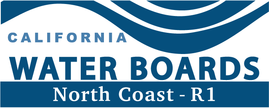Solid Waste Land Disposal Program / Landfills
The Solid Waste Land Disposal Program regulates the discharge to land of certain solid and liquid wastes. These wastes include municipal solid waste (MSW), hazardous wastes, designated wastes, and nonhazardous and inert solid wastes. In general, these wastes cannot be discharged directly to the ground surface without adversely affecting groundwater or surface water, and therefore must be contained to isolate them from the environment. The regulations applicable to these discharges are found in Title 27, for nonhazardous wastes, or Chapter 15 of Title 23, for hazardous wastes, of the California Code of Regulations. These regulations have both prescriptive and performance standards for waste containment, monitoring, and closure. The requirements are implemented through the adoption of Waste Discharge Requirements for the disposal facilities.
Disaster Debris Management
In the wake of the severe wildfires in October 2017, that cumulatively burned hundreds of thousands of acres across several counties both within and adjacent to the region, the North Coast Regional Water Board adopted a Conditional Waiver of Waste Discharge Requirements emergency cleanup activities related to the removal, storage, transportation, and disposal of solid waste and debris resulting from the fires. Natural disasters generate large amounts of debris including, building materials, sediments, vegetative debris, personal property, and other materials. For large-scale disasters, staging and storage areas may be needed to store, separate, or process the debris before it is sent to a recycling, composting, combustion, or disposal facility.
To obtain coverage under the Conditional Waiver, entities accepting disaster-related wastes for staging or final disposal must submit a Notice of Intent (NOI) within 30 days after initial discharge of any disaster-related waste from Declared Disaster Areas. The NOI must indicate that the proposed discharge meets the conditions of the temporary waiver. Following completion of the discharge/disposal of the waste, dischargers must file a Notice of Termination (NOT) confirming that waste was disposed of in compliance with the conditions of the temporary waiver.
- California Code of Regulations, Title 27,
- California Code of Regulations, Chapter 15 Title 23,
- Regulation of Composting Operations: State Water Board program website for the implementation of Orders No. 2015-0121-DWQ and No. 2020-0012-DWQ.
- Deed Restrictions
- Federal Municipal Solid Waste Landfill Regulations (40CFR258)
- Resolution No. 92-49: Policies and procedures for investigation, cleanup, and abatement of discharges under water code section 13304.
- State Water Board Resolution No. 2016-0010: Adopting the Human Right to Water as a Core Value and Directing Its Implementation in Water Board Programs and Activities.
- Resolution No. 93-62: Policy for regulation of discharges of municipal solid waste.
- Resolution No. 93-100: Provides clarification of deadlines for implementation of federal requirements for discharges of municipal solid waste.
- Senate Bill (SB) 1082: The Framework was developed into regulations and incorporated into Title 27 in order to clarify the roles and responsibilities of DTSC and the SWRCB/RWQCBs.
- Subtitle D Regulations: information regarding the implementation of Federal Subtitle D regulations State Water Resources Control Board and by Regional Water Quality Control Boards.
- Super Order: Implementation of SWRCB Resolution No. 93-62.
- State Water Boards and California Integrated Waste Management Board (CIWMB) Joint Technical Document Indexes
Regulations and Policies
- Ash reuse for agricultural amendments falls under the Policy for Waiving Waste Discharge Requirements for Specific Types of Waste Discharge in the North Coast Region (General Waiver). For most recent version, see Adopted Orders.
- Involve confined animal facilities (which falls under the Dairy Program)
- Involve Forestry Management Practices (Which falls under the Forest Activites Program)
Waste Classification
Section 13260(a) of the California Water Code requires that any person discharging waste or proposing to discharge waste within any region, other than to a community sewer system, that could affect the quality of the waters of the State, must file a report of waste discharge. This report must outline the types of wastes to be discharged in order to determine appropriate waste management unit design, operation, monitoring, closure and post closure maintenance requirements. So, the first step in Land Disposal Program regulation is the classification of wastes discharged to land according to risk they pose to water quality, and determine appropriate waste management options. This link provides a conceptual framework for waste classification and determination of waste management options.
The Solid Waste program does not regulate the following types of facilities:
Contacts
Groundwater Permitting Unit Supervisor
Kelsey C. Cody, Ph.D.
Senior Environmental Scientist
(707) 576-2347
Kelsey.Cody@waterboards.ca.gov
Landfills and Other Solid Waste
Terri Cia
Engineering Geologist
(707) 576-2668
Terri.Cia@waterboards.ca.gov
Compost Facilities
Lynette Shipsey
Water Resource Control Engineer
(707) 576-2460
Lynette.Shipsey@waterboards.ca.gov
Resources
Resources and Other Documents
none at this time
(Page last updated 3/26/25)
Water is a precious resource in California, and maintaining its quality is of utmost importance to safeguard the health of the public and the environment.
Statewide Campaigns
EPA Water Sense
File an Environmental Complaint
Save Our Water
Flex Alert
Register to Vote



